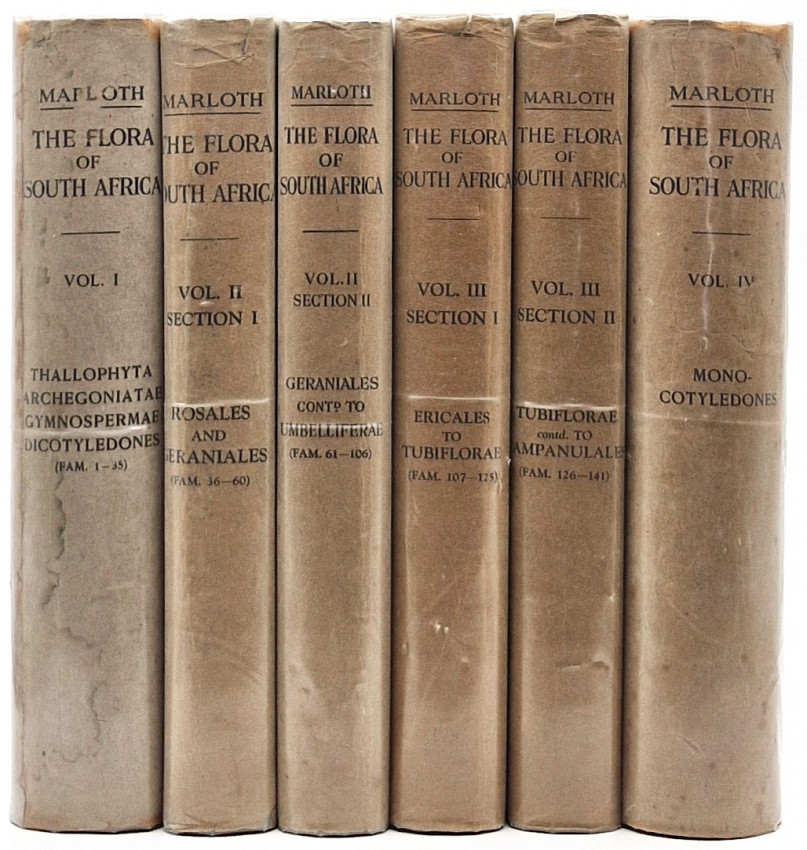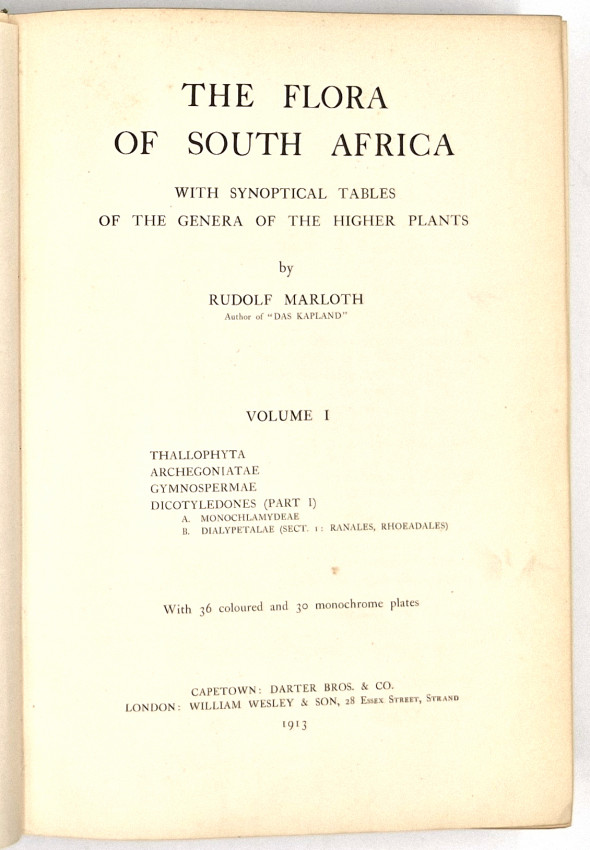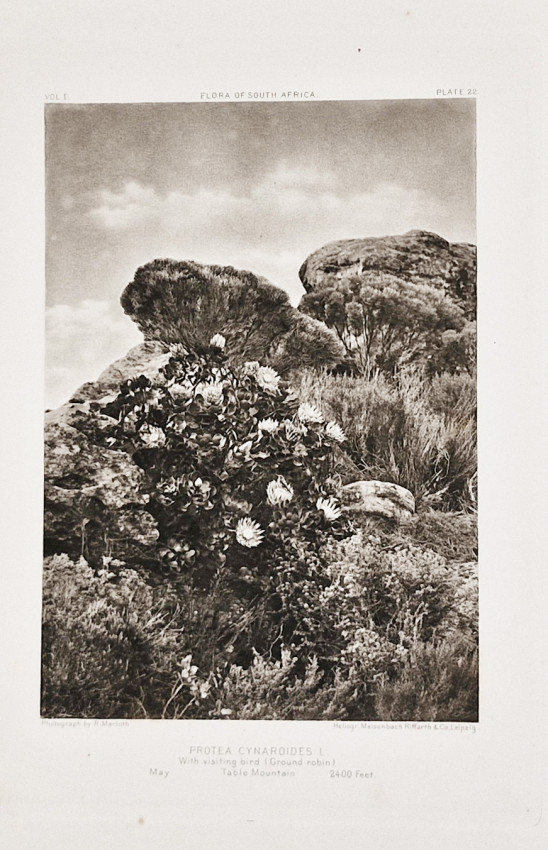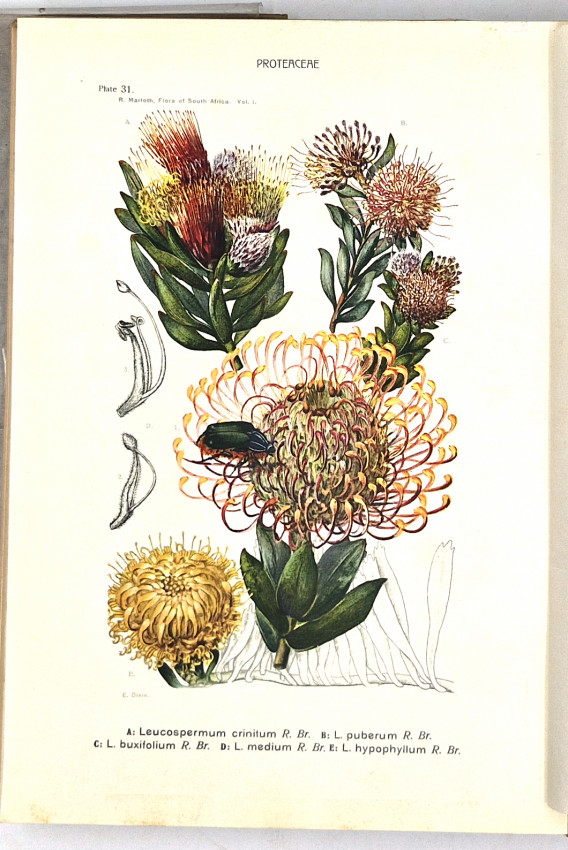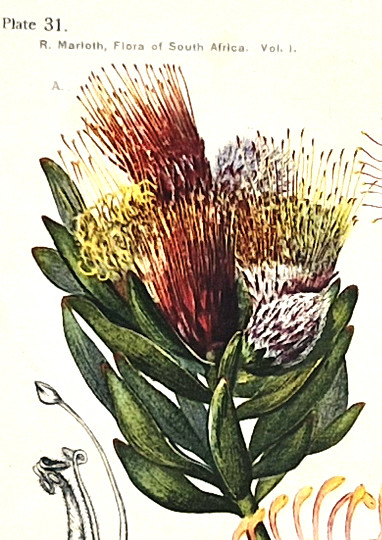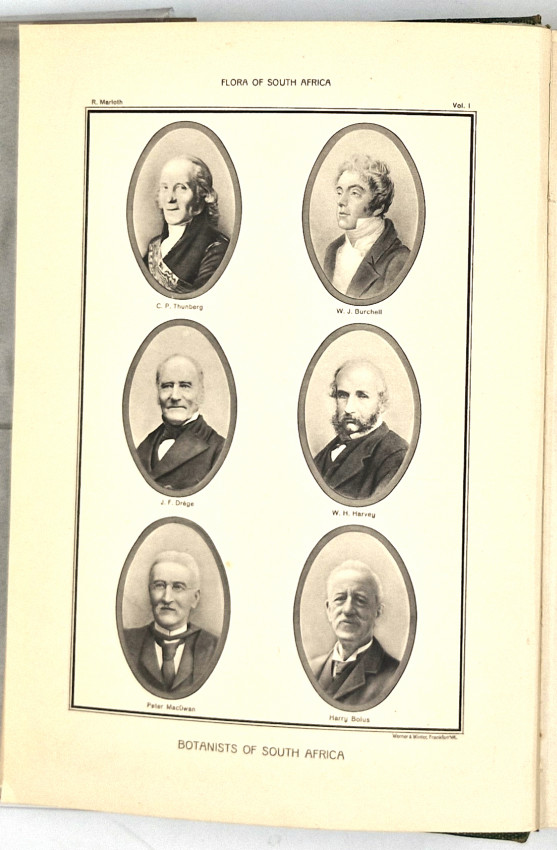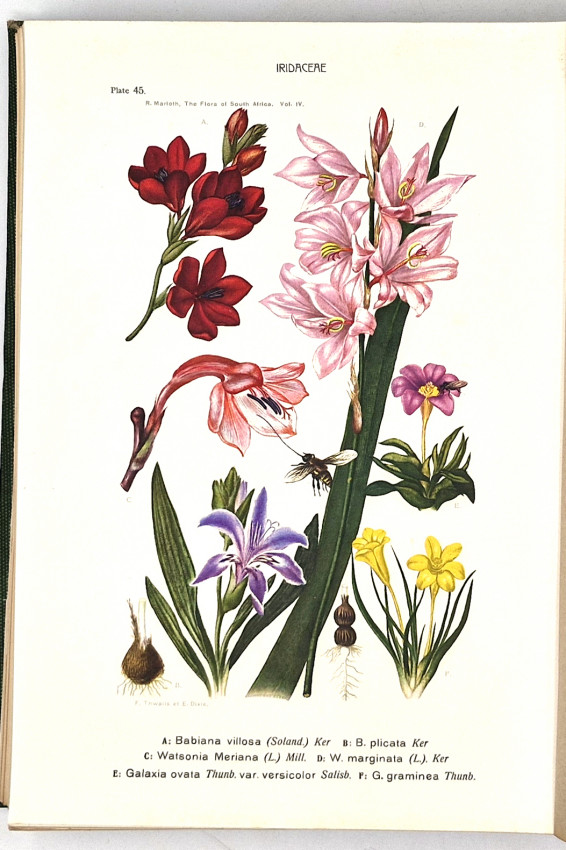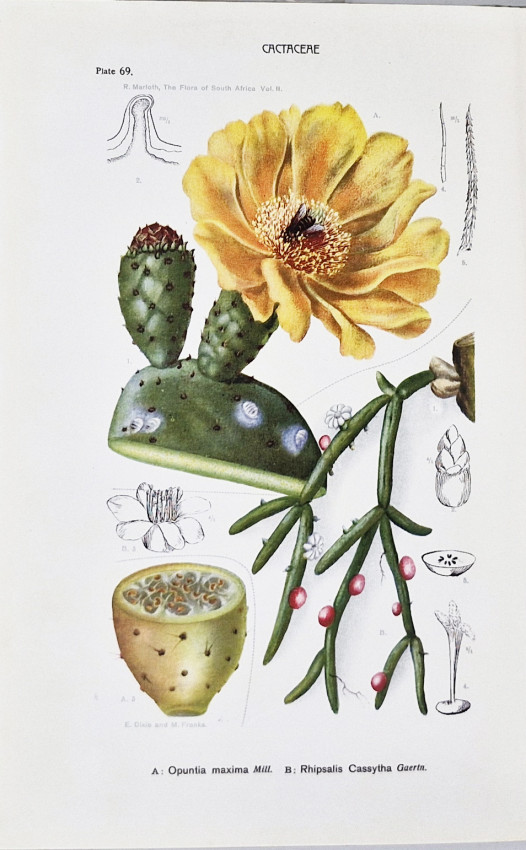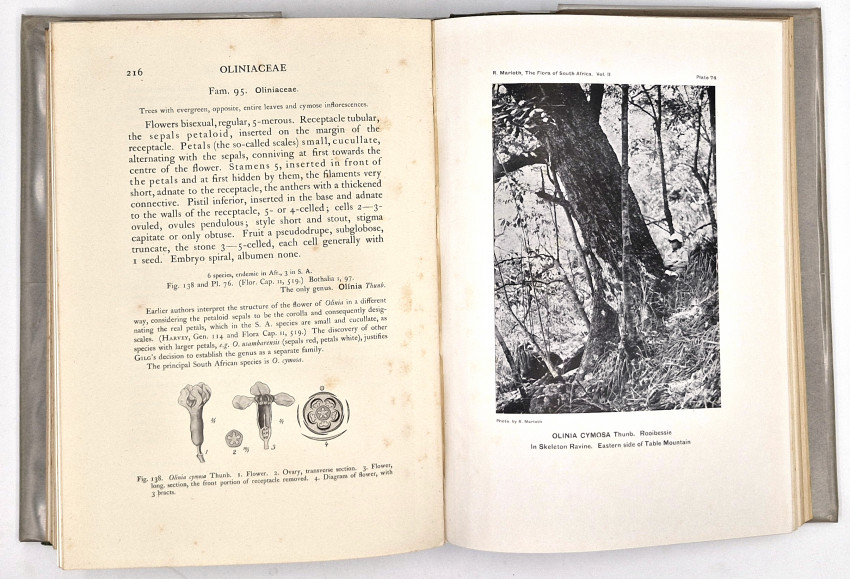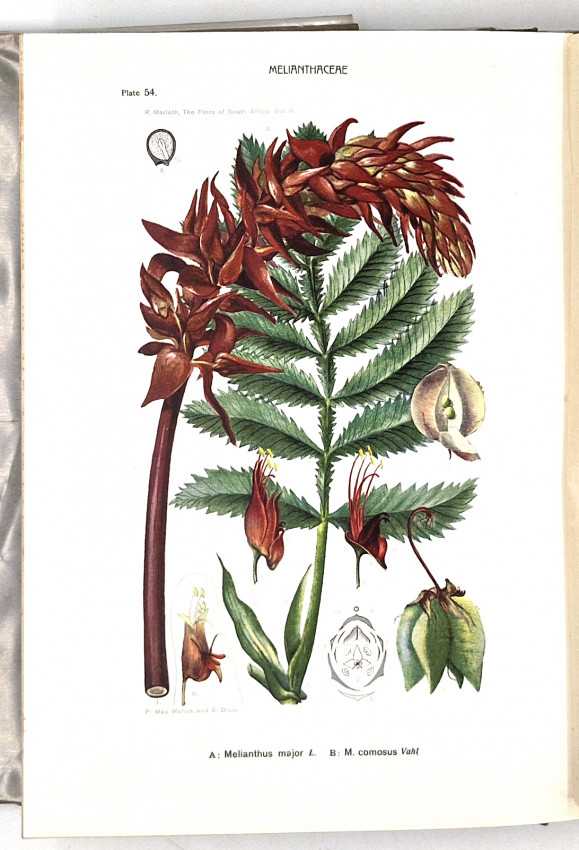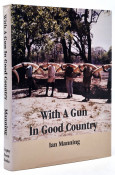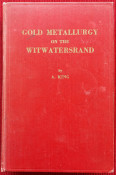First Edition: 4 volumes in 6 parts (volumes II and III in four parts), 180 colour plates, 80 text figures, original green buckram cloth, titled gilt on the upper covers and spines, top edges gilt. The cloth of volumes 1 & 4 published in 1913 & 1915 (twenty years before volumes 2 & 3) are lightly insect scarred. Very unusually all six dust jackets are present as is Figure 59 on page 186 of volume IV, a fine set.
‘The Mystery of the Missing Plate’, In Veld & Flora, September 1976, pages 10-11, Dennis Woods writes: ‘In addition to the profusion of colour plates (the originals mostly hand-painted), The Flora of South Africa is illustrated with drawings and full page black and white photographs. On page 186 of Volume IV appears the description of Figure 59, an illustration (a black and white photograph) showing "some of the more frequent spring flowers....among old silver trees...on...Lionshead...". But volume IV was actually published without this plate, and an explanatory slip inserted near the front of the Volume, saying "Fig. 59 (see page 186) is inadvertently detained and will be distributed to subscribers as soon as possible". In the present copy the missing figure 59 is loosely inserted in the correct position.
‘The originals of the colour plates for The Flora of South Africa were painted in Cape Town by artists such as Ester Smith and Ethel May Dixie and printed in Germany. ‘The production of this costly and magnificent work was made possible only by the bountiful generosity of Sir Lionel and Lady Phillips, who together bore the entire cost of printing and publication. After the First World War, the valuable colour plates were sent from Germany to Lionel Phillips’ agents in England for safekeeping. By a cruel stroke of fate the warehouse in which they were stored was destroyed by fire in 1926. Copies of volumes I and IV yet to be bound were also destroyed, which resulted in the production of subsequent copies of these volumes without the colour plates.’ As the figure was sent out after publication to be inserted very few copies are found with the missing illustration.'
Marloth was an analytical chemist by profession and soon after he arrived in Cape Town in 1883 he started a herbarium of South African plants. He was devoted to the search for rare flora and he went on botanical expeditions as far afield as the Karoo, the Free State, Botswana and Namibia.
- Overall Condition: A Very Good Copy
- Size: 4to (295 x 215 mm)

